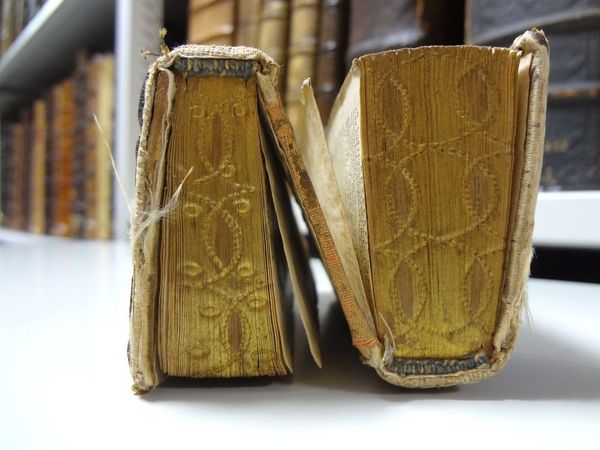Table of Contents
ToggleReading in the Middle Ages: A Rare Need
In the Middle Ages, reading was not as widespread as it is today. Most books were owned by the clergy or the wealthy and predominantly contained religious content, such as the Bible, psalters (Books of Psalms), or prayer books.
This was due to the fact that printing technology was not yet common, and books were still manually copied, making them both expensive and inaccessible to most people. With limited demand for books, medieval bookbinders developed innovative methods to enhance the utility and value of their creations.

The Dos-à-dos Binding Technique: Creativity in Functionality
One of the unique innovations of this time was the dos-à-dos binding technique—a French term meaning “back-to-back.” This method involved binding two books together to reduce weight and size, making them easier to carry or store.
How the Binding Worked
- Two books were bound so that the spine of one was adjacent to the leading edge of the other.
- A shared back cover connected both books, acting as a central bridge.
- When placed on a shelf, one book’s spine would face outward while the other’s spine would face inward.
This method not only saved materials but also provided convenience for readers who needed access to two related texts.
Common Applications
This technique gained popularity in the early 17th century, particularly in England. Bookbinders often paired related texts, such as the New Testament and the Book of Psalms, allowing readers to easily reference both works within a single volume. This design was especially useful for religious practices and ceremonies.

The Evolution into Multi-Volume Chains
The creativity of bookbinders didn’t stop at two volumes. Over time, they extended the dos-à-dos technique to create “book chains,” linking multiple books together—sometimes up to seven volumes. These chains were often used for thematic collections, such as theology, philosophy, or classical literature.
Such multi-volume bindings were not just functional; they also became works of art, showcasing the exceptional craftsmanship of the bookbinders.

The Decline and Revival of the Dos-à-dos Technique
The Decline
By the mid-20th century, the dos-à-dos technique and the intricate skills of traditional bookbinders began to fade, replaced by modern printing and binding technologies. These industrial methods made hand-binding techniques both unnecessary and impractical.
A Brief Revival
However, the dos-à-dos binding saw a brief resurgence in the mid-20th century when modern bookbinders experimented with the technique for unique collections or artistic creations. These contemporary versions, though less complex, retained significant historical and artistic value.
Legacy and Artistic Value
Today, surviving dos-à-dos books are considered historical treasures, reflecting the ingenuity and craftsmanship of medieval artisans. These books are not only tools for reading but also symbols of an era that valued creativity even in the seemingly simple task of bookbinding.
Artistic Significance
- Aesthetic appeal: These books often feature elaborate decorations, including intricate patterns, embossed designs, or premium leather covers.
- Practicality: Combining multiple texts into one compact book for ease of use.
- Historical importance: Each book stands as a testament to the progress and creativity in manual craftsmanship over the centuries.

Conclusion
The dos-à-dos binding technique exemplifies the perfect balance of functionality and artistry in the history of bookmaking. Though the technique is no longer common, its legacy endures, inspiring awe at the creativity and precision of artisans from centuries past.